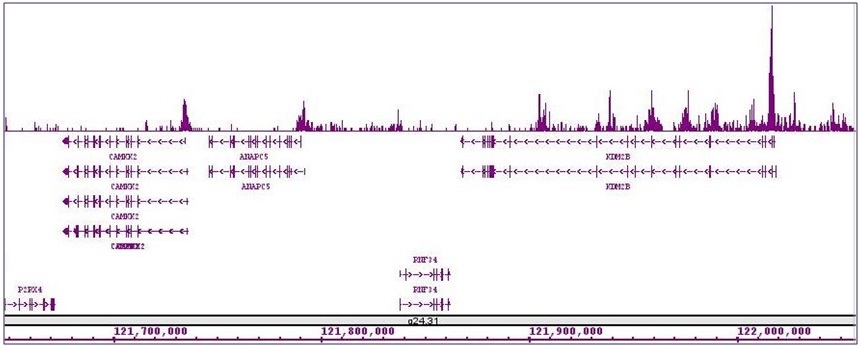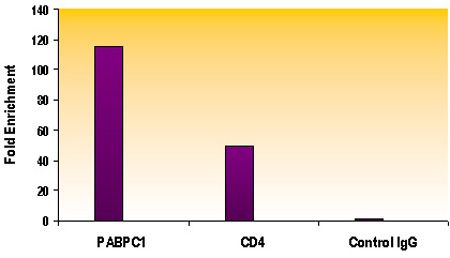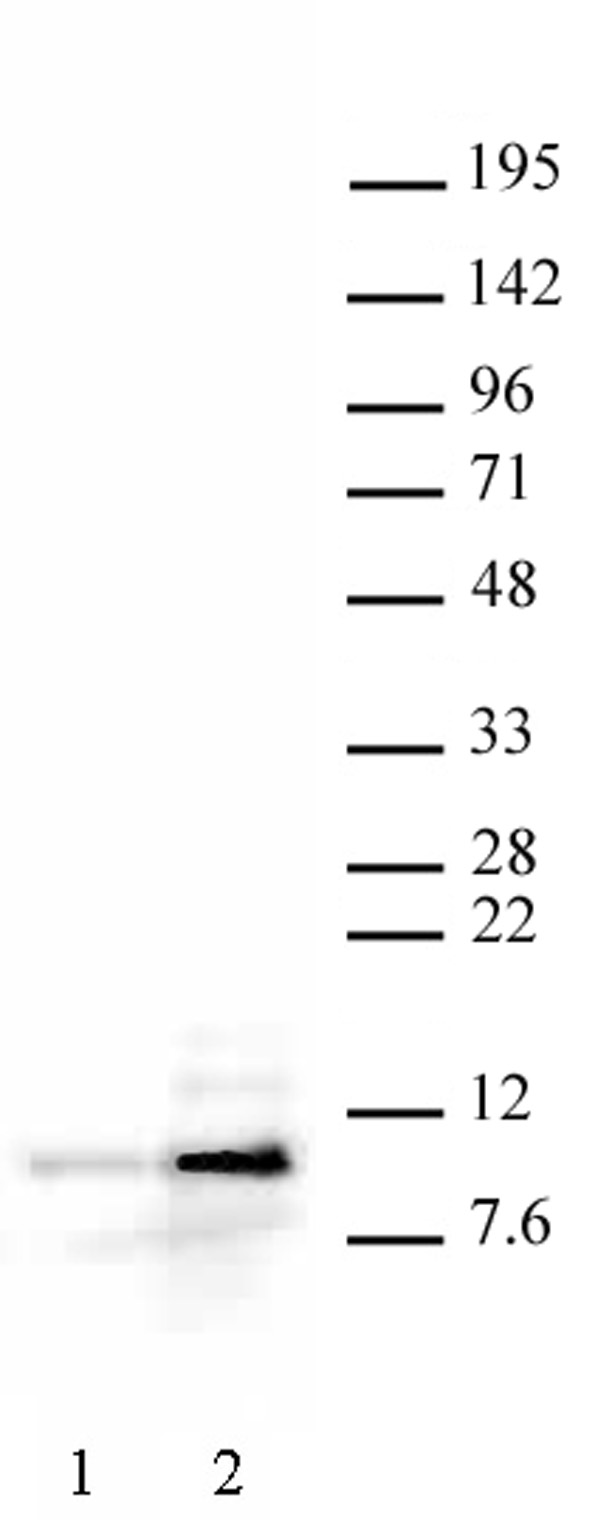Histone H4ac (pan-acetyl) antibody (pAb)
Host / Isotype
Rabbit / IgG
Reactivity
Human, Mouse, Wide Range Predicted
Applications
ChIP, ChIP-Seq, DB, ICC, IF, IHC, WB
Cat No : 39026,39925,39926 39925
Synonyms
验证数据展示
产品信息
| Tested Applications |
ChIP, ChIP-Seq, DB, ICC, IF, IHC, WB
Applications Validated by Active Motif: ChIP: 5 - 10 ug per ChIP ChIP-Seq: 5 - 10 ug each ICC/IF: 1 - 2 ug/ml dilution IHC (FFPE): 1:1000 dilution WB: 1 - 2 ug/ml dilution |
| Tested Reactivity | Human, Mouse, Wide Range Predicted |
| Host / Isotype | Rabbit / IgG |
| Class | Polyclonal |
| Type | Antibody |
| Modification | Acetylated |
| Immunogen | This Histone H4 pan-acetyl antibody was raised against a peptide containing the amino terminal region of Tetrahymena hv1, an H2A variant with homology to mammalian histone H4. The antibody recognizes acetylated histone H4, but not H2A, in HeLa extracts. |
| Full Name | Histone H4ac (pan-acetyl) antibody (pAb) |
| Synonyms | histone H4, histone, H4, histone-H4, histoneH4, pAb, polyclonal, antibody, antibodies, sample |
| Molecular weight | 8 kDa |
| GenBank accession number | XP_001016593 | RRID | AB_2687872 | Purification Method | Protein A Chromatography |
| Buffer | Purified IgG in PBS (pH 7.5) with 30% glycerol and 0.035% sodium azide. Sodium azide is highly toxic. For your convenience, an unpurified serum version (Catalog No. 39243) of this antibody is also available. |
| Storage | Some products may be shipped at room temperature. This will not affect their stability or performance. Avoid repeated freeze/thaw cycles by aliquoting items into single-use fractions for storage at -20°C for up to 2 years. Keep all reagents on ice when not in storage. |
背景介绍
Histone H4 is one of the core components of the nucleosome. The nucleosome is the smallest subunit of chromatin and consists of 147 base pairs of DNA wrapped around an octamer of core histone proteins (two each of Histone H2A, Histone H2B, Histone H3 and Histone H4). Histone H1 is a linker histone, present at the interface between the nucleosome core and DNA entry/exit points; it is responsible for establishing higher-order chromatin structure. Chromatin is subject to a variety of chemical modifications, including post-translational modifications of the histone proteins and the methylation of cytosine residues in the DNA. Reported histone modifications include acetylation, methylation, phosphorylation, ubiquitylation, glycosylation, ADP-ribosylation, carbonylation and SUMOylation; they play a major role in regulating gene expression. Lysine N-e-acetylation is a dynamic, reversible and tightly regulated protein and histone modification that plays a major role in chromatin remodeling and in the regulation of gene expression in various cellular functions. Acetylation of histone H4 occurs at several different lysine positions in the histone tail, and is performed by Histone Acetyltransferases (HATs) such as Hat1 or Gcn5. Acetylation of histones is often associated with transcriptional activation.





